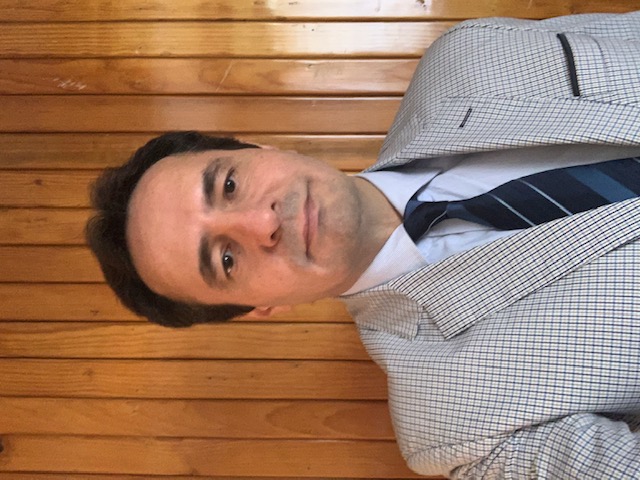Social Capital as a Result of Interpersonal Communication Processes in the Daily Activities and Assemblies Held Among the Merchants of a Street Markets in the Venustiano Carranza Mayoralty in Mexico City in April 2020
Main Article Content
Abstract
Social capital is presented in social relationships, which are based on interpersonal communication. This research aims to find out how interpersonal communication category between the merchants of a street market helps to achieve a strengthened social capital that favors all members of the street market to improve their internal processes. In such a way, objectives, methodologies, theoretical references, results and conclusions of researches carried out are examined, as well as theories that have been updated on interpersonal communication and social capital; in the same way, a survey was applied to 30 merchants of a street market. The results obtained are not definitive and show that the merchants present an acceptable interpersonal communication and social capital, but they are not enough to solve the problems that the street market has in its internal processes.
Downloads
PLUMX Metrics
Article Details
The author keeps the property rights with no restriction whatsoever and guarantees the magazine the right to be the first publication of the work. The author is free to deposit the published version in any other medium, such as an institutional archive or on his own website.
References
Agejas, J. (2016). Responsabilidad moral en la comunicación. Rogelio Del Prado Flores (coord.), Ética y los derechos de las audiencias. México: Limusa.
Anand, P. y Poggi, A. (2018). Do social resources matter? Social capital, personality traits, and the ability to plan ahead. Kyklos, 71(3), 343-373. Recuperado de http://web.a.ebscohost.com/ ehost/pdfviewer/pdfviewer?vid=36&sid=931bbbcb-e6df-41b5-b7d8-b9b171163445%40sessionmgr4008
Arellanes, Y., Arellanes, N. y Ayala, D. (2017). El tianguis de cambio de Pátzcuaro, Michoacán a través del metabolismo social desde Mesoamérica hasta el siglo XXI. Revista Estudios Sociales, 27(50), 227-247. https://doi.org/10.24836/es.v27i50.489
Arévalo, R. (2019). Comunicación integral para las organizaciones. Liderazgo y creación de valor. Salamanca, España: Comunicación Social. Ediciones y Publicaciones.
Bourdieu, P. (1990). Cuestiones de sociología. México: Grijalbo.
Bourdieu, P. (1985). The forms of capital. En J. Richardson (ed.), Handbook of theory and research for the sociology of education. Nueva York: Greenwood.
Bustamante, T., Carrera, B. y Schwentesius, R. (2017). Sostenibilidad de pequeños productores en Tlaxcala, Puebla y Oaxaca, México. Estudios Regionales en Economía, Población y Desarrollo,(37), 1-37. Recuperado de https://www.researchgate.net/profile/Rita_Rindermann/publication/312275016_
Sostenibilidad_de_pequenosproductores_en_los_Tianguis_Organicos_
en_Tlaxcala_Puebla_y_Oaxaca/links/5877f81b08aebf17d3bbcab4/Sostenibilidad-de-pequenosproductores-en-los-Tianguis-Organicos-en-Tlaxcala-Puebla-y-Oaxaca.pdf
Bustamante, T. y Schwentesius, R. (2018). Perfil y situación de los productores que integran los tianguisy mercados orgánicos en México. Revista Agricultura, Sociedad y Desarrollo, 15(4), 507-530.
Recuperado de http://www.scielo.org.mx/pdf/asd/v15n4/1870-5472-asd-15-04-507.pdf
Cadena, P., Rendón, R., Aguilar, J., Salinas, E., Cruz, F. y Sangerman, D. (2017). Métodos cuantitativos, métodos cualitativos o su combinación en la investigación: un acercamiento enlas ciencias sociales. Revista Mexicana de Ciencias Agrícolas, 8(7), 1603-1617.
Recuperado de http://www.scielo.org.mx/pdf/remexca/v8n7/2007-0934-remexca-8-07-1603.pdf
De Soto, H. (1986). El otro sendero. Lima, Perú: Diana.
Fernández, C. y Galguera, L. (2008). La comunicación humana en el mundo contemporáneo. (3a. ed.).México: McGraw-Hill Interamericana.
Fernández, C. y Galguera, L. (2009). Teorías de la comunicación. México: McGraw-Hill Interamericana.
González, F. y Vega, S. (2016). Mercados itinerantes. Estudio comparativo de dos mercados en México. Revista Ciencias Sociales, (151), 127-149.
Recuperado de https://search.proquest.com/docview/1812639775?accountid=41021
Gravante, T. (2019). Prácticas y redes de autonomía alimentaria en la Ciudad de México: un acercamiento etnográfico. Revista Interdisciplina, 7(19), 163-179.
http://dx.doi.org/10.22201/ceiich.24485705e.2019.19.70292
Guzmán, A., Flores, L. y Rosales, P. (2019). Patrimonio cultural potencial turístico en la Heroica Ciudad de Huajuapan de León, Oaxaca. Revista de Investigación Académica sin Frontera, (29), 6-29. Recuperado de http://revistainvestigacionacademicasinfrontera.com/sistema/
index.php/RDIASF/article/view/215/212
Julien, C. (2015). Bourdieu, social capital and online interaction. sage, 49(2), 356-373.
http://dx.doi.org/10.1177/0038038514535862
Kant, E. (2007). Fundamentación de la metafísica de las costumbres. San Juan, Puerto Rico: Edición Pedro M. Rosario Barbosa.
Medina, L. y Arnaiz, S. (2017). Una aproximación a la situación turística en la región de Bahía de Banderas, México. Revista Turismo y Sociedad, (20), 105-130. http://dx.doi.org/10.18601/01207555.n20.06
Miller, J. (2015). The critical intimacies of walking in the Abasto Shopping Mall, Buenos Aires, Argentina. Social & Cultural Geography, 16(8), 869-887. http://dx.doi.org/10.1080/14649365.2015.1026928
Paarlberg, L., Hoyman, M. y McCall, J. (2018). Heterogeneity, income inequality, and social capital: a new perspective. Social Science Quarterly, 99(2), 699-710. http://dx.doi.org/10.1111/ssqu.12454
Ramírez, N., Arana, N. y Guevara, M. (2019). Participative management model for humanizing public spaces. Analco neighborhood, Puebla, México. Revista Bitácora Urbano Territorial, 29(1),43-52. http://dx.doi.org/10.15446/bitacora.v29n1.60361
Rivera, R., López, N. y Mendoza, A. (2016). Políticas de apoyo a la productividad de la microempresa informal ¿dónde está México? Revista Problemas del Desarrollo, 184(47), 87-109. http://dx.doi.org/10.1016/j.rpd.2016.01.005
Robles, D. y Martínez, M. (2018). Determinantes principales de la informalidad: un análisis regional para México. Revista Región y Sociedad, (71), 1-35. http://dx.doi.org/10.22198/rys.2018. 71.a575
Sechi, G., Borri, D., De Lucia, C. y Celmins, V. (2018). Environmental learning in regions: a social capital based approach. The case of Latvia. Environmental Education Research, 24(3), 343-364.
http://dx.doi.org/10.1080/13504622.2016.1214867
Sloterdijk, P. (2006). En el mismo barco. (4a. ed.). España: Siruela.
Tello, N. (2018). Experiencias de mujeres en tianguis y mercados populares de Oaxaca. Revista Íconos, (62), 105-118. http://dx.doi.org/10.17141/iconos.62.2018.3238
Tianguis. (2019). Diccionario de la lengua española. (23a. ed.). Recuperado de https://dle.rae.es/tianguis
Vásquez, A. (2010). Sloterdijk: Modelos de comunicación oculto-arcaicos y modernos-ilustrados; para una época de ángeles vacíos. Revista Nómadas, 26(2), 1-21. Recuperado de
http://www.redalyc.org/articulo.oa?id=18118916015
Wojtyla, K. (2011). Persona y acción. España: Ediciones Palabra.
Wong, T. y Reevany, B. (2019). Understanding corporate social responsibility (csr) among micro businesses using social capital theory. International Journal of Business & Society, 20(2), 675-690.
Recuperado de http://web.a.ebscohost.com/ehost/pdfviewer/pdfviewer?vid=20&sid=931bbbcb-e6df-41b5-b7d8-b9b171163445%40sessionmgr4008
Zayas, P. (2012). La comunicación interpersonal. Recuperado de https://ebookcentral.proquest.com/lib/anahuacsp/detail.action?docID=3201432

